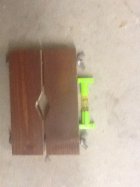Bought one of the Xtreme Accuracy scope leveling tools that sit inside your action on the bolt rails. Sounds like a perfect way to level your scope. I also have the B Square model which bolts onto the Pictanny rail. Now I realize there could be a problem with rail mounting holes not being drilled perfect. HOWEVER, On my Surgeon 591 action with built in 20 moa rail when utilizing both tools they do not read level the same. Off by maybe half a bubble, not much but not perfect. So which one do I believe?????? I've mounted the scope both ways, and don't see much difference, but I'm anal and want perfect.
Perplexed.
Danny
Perplexed.
Danny












